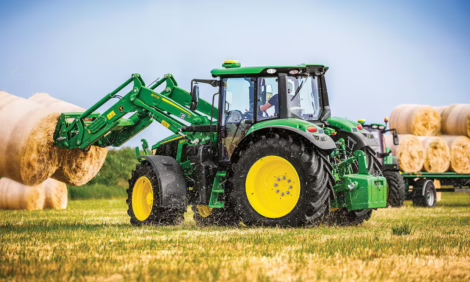



Spring Thaw Threatens Producers
US - Record snowfall this winter and predicted warm weather and rain in the coming weeks have set the stage for rapid melting and potential local and regional flooding.“Farmers need to consider the flooding possibilities and act now while the snow is still solid, allowing tractors and equipment to work,” said Kris Kohl, Iowa State University agricultural engineer.
“With snow drifts and piles in new places, they may act as temporary dams and prevent runoff water from exiting through normal waterways and ditches. For farmsteads within the 100-year flood plain, consider moving forages and grain to higher ground or selling it.”
Mr Kohl offers additional advice for farmers facing potential flooding, including farmstead, feedlot, grain bin and silage pile precautions.
Farmsteads and driveways
Snow has been piled everywhere, which will cause temporary local flooding until the natural waterways are opened up. Snow piles and drifts can cause the melted water to pond in new places and flood farmsteads. Mr Kohl recommends planning ahead and taking these steps:
- Be sure that a pathway through the snow to a good open outlet exists before the water turns all of the soil to mud.
- Make sure snow piles and drifts are directing water away from your farmstead and buildings.
- Use a sump pump or transfer pump to redirect water away from critical areas during the warm days and take it inside before night when it could freeze and break.
Grain bins
Check on all grain bins now to be sure the grain is in good condition. There are reports of snow blowing into bins and many bin sites have not been visited for months because the snow is too high to get down the driveways. Snowdrifts around many bin sites will cause local flooding that may soak the bottom of the grain, causing the bin to rupture. Therefore, be sure that the water has a way to exit the bin site without obstruction and that snow piles and drifts are not redirecting water toward the bins.
Forage bales and silage piles
If bales are in a 100-year flood plain, move them to higher ground. Move snow away from the bales and silage piles to provide an escape path for the melting snow so that it will not soak the feed.
Feedlots
A lot of snow has been pushed into piles within feedlots. Before the lot turns to mud, remove as much snow and manure as possible. Move it to a location that will not run off into surface water. Using a box scraper in the mornings on the feedlot will smooth the surface and remove manure before the top six inches melts. If there is no available location outside the lot to stockpile the scrapings, an effort should be made to pile them in low areas away from the solids settling structures. Here they can melt slowly and not plug settling structures. If the feedlot is subject to flooding, develop a contingency plan for removing the livestock and monitor the situation closely.
TheCattleSite News Desk


